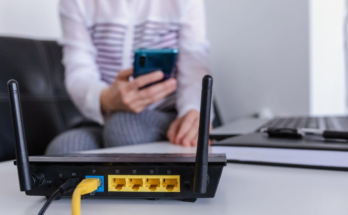
Spooky season is fast-approaching, and for many thrill-seekers, that means it’s time to pay other people to scare the crap out of you at a haunted house.
From carefully crafted sound design, to scenes built around specific phobias, to the art of misdirection—creating a great haunt takes a strong understanding of human behavior. We talked with some of the people behind your favorite chainsaw-wielding madmen, creepy nurses, and the classic: scary clowns (“scary clown” feels redundant, huh).
Bud Stross co-owns The Dent Schoolhouse in Cincinnati; Melissa Sapienza is a former actor and show manager and current promotional and internal consultant at ScareHouse in Pittsburgh. Both attractions have been consistently named as some of the most popular haunts in the U.S. Here’s what the pros have to say about haunt etiquette and how to get the most out of your experience.
You paid to be scared, so let yourself be scared
When you go to see a comedy, do you try to stop yourself from laughing? When you go to a restaurant, do you resist the food? I hope not! So if you’re going to pay professionals to scare you, Stross says, “Let go, and let the haunt take over.”
G/O Media may get a commission
Sapienza says the ideal customer is someone who is enthusiastic and doesn’t try to ruin the immersive experience. Still, scare actors know you aren’t totally in control of your fear response. The way many customers deal with fear is comedy. Stross says that while many try to befriend actors and make jokes, the performers “see the real defense mechanism at play.” Likewise, one of the number one things that actors hate most is when a guest tries to scare the actor back.
Unpredictable reactions come with the territory of scaring real people. Ever notice how scares are coming from behind you or from the side? According to Stross, the reason is two-fold: 1. to keep your party moving through the house, and 2. to prevent you from accidentally punching a performer.
One tip to “let the haunt take over” is to think of yourself like an audience member—just like you shouldn’t crack jokes in a movie theater, don’t try to get your own scares (or laughs) in a haunted house. (And if you do crack jokes in a movie theater, well, you need a whole other article.)
At the end of the night, everyone’s goal is entertainment—not trauma. As Stross puts it, “The whole point is to have Halloween fun and to keep you coming back.”
But if you really can’t handle it…
One of Stross’s tips to make sure you’re not an easy target? Strength in numbers: “Put the scaredy cat in the middle and have them hang on for dear life.”
If you need some more peace of mind and/or perspective, remember that the people behind these haunts are seriously concerned with the safety of both their performers and guests. Stross says most attractions will have security camera with night vision in every scene, as well as roaming security.
And if you just can’t hack it (horror pun?), Stross and Sapienza both share that there are plenty of emergency exits throughout the attraction.
Put away your phones
Many attractions have explicit rules around cell phones and cameras, and for good reason. In addition to taking away from the immersive experience, the flash from your phone is a safety issue. Stross points out that scare actors are “grinding in the dark for hours, so the sudden flash from your camera can seriously blind and disorient them.” And since it’s so dark in there, Stross adds, “there’s no way your footage will turn out all that great anyways.”
And yet, in the era of content creators, you might have a natural instinct to post your experience—in fact, some attractions are gaining visitors from viral TikTok followings. But back to the movie theater analogy: If you’re behind your screen, you won’t get the full immersive experience. Or worse, you risk getting pulled out by security.
Sapienza adds even getting a warning can “ruin the illusion for yourself and for those around you.” Instead, she encourages guests to take pictures with the ScareHouse mascots while in line, or at any other scenic points before and after the haunt—just not during. Stross points out that most attractions will have areas designed specifically for social media post potential. The Dent Schoolhouse has specific Snapchat Geofilters, hashtags, and picture-worthy opportunities (read: More than 400 jack-o-lanterns).
Practice patience
According to Stross, during the past year, a lot of scare professionals have been swapping stories in Facebook groups about the startling rise in line jumping at their attraction. Stross says the leading speculation is that there’s some kind of post-pandemic decrease in patience.
So please: Be courteous to your fellow patrons. If not because you’re a decent person, then at least because you don’t want to get kicked out.
Rethink that drink
It’s no secret that haunted attractions will be visited by people under the influence. But according to Sapienza, “If you look like you might be unsafe to yourself or others, we might ask you to leave and come back another night.” Similarly, Stross says his team understands many guests will pre-game in some way, but you’ll be turned away if you become disorderly.
Besides, you might want to reconsider getting intoxicated at all. Like mentioned above, a lot of what makes a great haunt is all the careful consideration of the human psyche. So, anything that messes with your senses (like drugs and alcohol) might mess with your overall experience. Luckily, a little hot chocolate never hurt anybody.
Scare actors aren’t just high school kids
Many attractions hire performers from all walks of life; Stross says it’s not uncommon for someone without a day job to be working right alongside a doctor-by-day, scare-actor-by-night. When it comes to hiring, one thing Sapienza looks for is customer service experience, since “you have to be ready to deal with a lot of characters.”
A strong sign for the haunt industry is the sense of community these workers find, with Sapienza and Stross pointing out how a lot of the same actors come back year after year. Working together to scare people all night turns everyone into a family. It just so happens to be the kind of family that will brag to each other about how they made you pee your pants.



